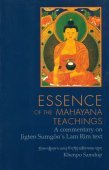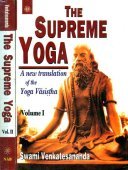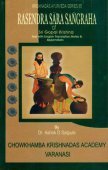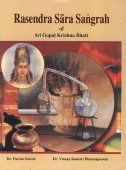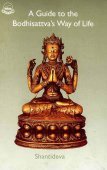Teaching: 3 definitions
Introduction:
Teaching means something in Hinduism, Sanskrit, the history of ancient India. If you want to know the exact meaning, history, etymology or English translation of this term then check out the descriptions on this page. Add your comment or reference to a book if you want to contribute to this summary article.
Images (photo gallery)
(+15 more images available)
In Hinduism
Natyashastra (theatrics and dramaturgy)
Source: Shodhganga: Elements of Art and Architecture in the Trtiyakhanda of the Visnudharmottarapurana (natya)Teaching (of boys) is associated with Utsaṅgahasta: one of the thirteen Combined-hand Gestures (in Indian Dramas) (known as saṃyuktahastas), according to the Viṣṇudharmottarapurāṇa, an ancient Sanskrit text which (being encyclopedic in nature) deals with a variety of cultural topics such as arts, architecture, music, grammar and astronomy.—According to the Śabdakalpadruma, the word utsaṅga means embrace. In the utsaṅga posture, hands are in arāla position and the palm upwards and overturned and this posture shows the touch of other. In the Abhinayadarpaṇa, the utsaṅga posture is suggested to denote embrace as the word itself means. Moreover this posture is also used to show shame, displaying ornaments, and teaching of boys.

Natyashastra (नाट्यशास्त्र, nāṭyaśāstra) refers to both the ancient Indian tradition (shastra) of performing arts, (natya—theatrics, drama, dance, music), as well as the name of a Sanskrit work dealing with these subjects. It also teaches the rules for composing Dramatic plays (nataka), construction and performance of Theater, and Poetic works (kavya).
Yoga (school of philosophy)
Source: ORA: Amanaska (king of all yogas): A Critical Edition and Annotated Translation by Jason BirchThe Teaching (of one’s Guru) is denoted by the Sanskrit term Vākya, according to the Dattātreyayogaśāstra (roughly contemporary with the Amanaska’s second chapter).—Accordingly, while discussing the merits of Yogic practice: “Without practice, [the Yogin] becomes worldly. Therefore, having remembered the teachings (vākya) of his guru, he should practise [yoga] day and night. Thus, [only] through the constant practice of Yoga, does the [second] stage [of Yoga called] Ghaṭa arise. Without the practice of yoga, [it is all] in vain. [Yoga] is not perfected through social gatherings. Therefore, [the Yogin] should practise only yoga with every effort”.

Yoga is originally considered a branch of Hindu philosophy (astika), but both ancient and modern Yoga combine the physical, mental and spiritual. Yoga teaches various physical techniques also known as āsanas (postures), used for various purposes (eg., meditation, contemplation, relaxation).
India history and geography
Source: Singhi Jain Series: Ratnaprabha-suri’s Kuvalayamala-katha (history)Teaching (religion and philosophy) represents one of the various methods of pursuing the spiritual life in the Hermitages (or Ashrams) of ancient India, as vividly depicted in the Kathās (narrative poems) such as Uddyotanasūri in his 8th-century Kuvalayamālā (a Prakrit Campū, similar to Kāvya poetry).—Page 87.20-28: Here is a vivid description of the intellectual and spiritual life in the Aśrama of a Jaina Muni. Uddyotanasūri gives a list of twenty-one methods of study and discussions and approaches to the tenets of religion and philosophy, [e.g., teaching] [...]. Also see the description of the hermitage of Divākara Mitra described by Bāṇa in the Harṣacarita.

The history of India traces the identification of countries, villages, towns and other regions of India, as well as mythology, zoology, royal dynasties, rulers, tribes, local festivities and traditions and regional languages. Ancient India enjoyed religious freedom and encourages the path of Dharma, a concept common to Buddhism, Hinduism, and Jainism.
See also (Relevant definitions)
Ends with: Esoteric Teaching, Essential Teaching, Exoteric teaching, Oral teaching, Theoretical teaching, Traditional teaching.
Full-text (+3928): Upadesha, Shasana, Adhyapana, Bodhana, Shikshana, Pathana, Pravacana, Dhamma, Abhidhamma, Buddhadharma, Sucana, Vijnapana, Upadeshin, Vidyadana, Exoteric teaching, Acaryaka, Brahmanadarshana, Sutra, Esoteric Teaching, Pratipadana.
Relevant text
Search found 464 books and stories containing Teaching; (plurals include: Teachings). You can also click to the full overview containing English textual excerpts. Below are direct links for the most relevant articles:
A Manual of Khshnoom (by Phiroz Nasarvanji Tavaria)
Flower Adornment Sutra Preface
V. The Expression’s Inclusion of the Roots and the Branch-tips
Text of Preface to The Flower Adornment Sutra
The Great Chronicle of Buddhas (by Ven. Mingun Sayadaw)
Sakka’s Question (13): On the Various Elements < [Chapter 39 - How the Āṭānāṭiya Paritta came to be Taught]
Fourteen Kinds of Gift to Individuals < [Chapter 6 - On Pāramitā]
Buddha Chronicle 12: Sujāta Buddhavaṃsa < [Chapter 9 - The chronicle of twenty-four Buddhas]
Bodhisattvacharyavatara (by Andreas Kretschmar)
Text Sections 120-121 < [Khenpo Chöga’s Oral Explanations]
Interview with Kyabje Khenpo Trashi Palden < [Introduction Text]
Text Section 64-65 < [Khenpo Chöga’s Oral Explanations]
The Tattvasangraha [with commentary] (by Ganganatha Jha)
Verse 3226-3227 < [Chapter 26 - Examination of the ‘Person of Super-normal Vision’]
Verse 3340 < [Chapter 26 - Examination of the ‘Person of Super-normal Vision’]
Verse 3219-3221 < [Chapter 26 - Examination of the ‘Person of Super-normal Vision’]
Self-Knowledge in Krishnamurti’s Philosophy (by Merry Halam)
6. Review of other studies on Krishnamurti < [Chapter 1 - Introduction]
5. Language of Krishnamurti < [Chapter 1 - Introduction]
2. General view of Krishnamurti’s Philosophy < [Chapter 1 - Introduction]
Related products
(+15 more products available)
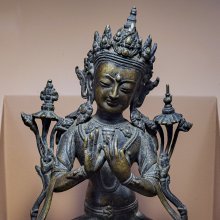
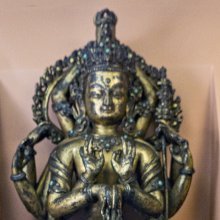
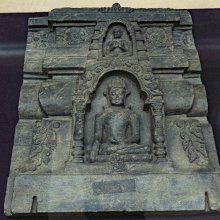
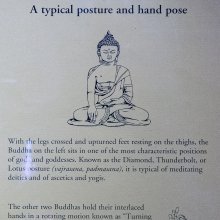
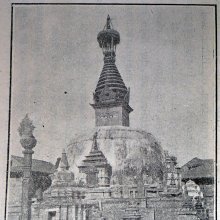
.jpg)
